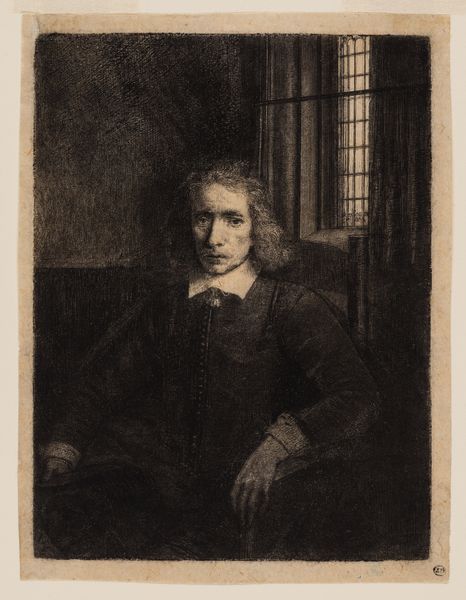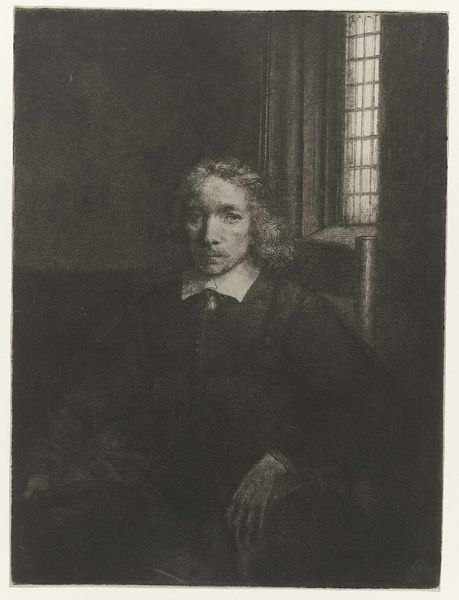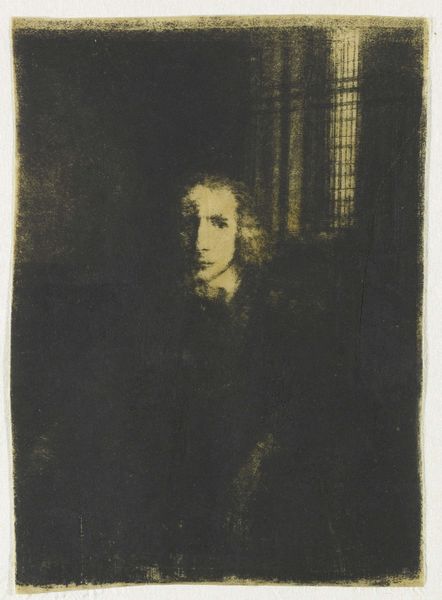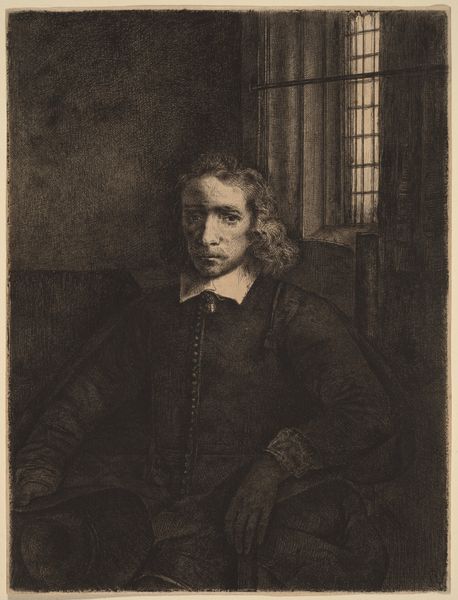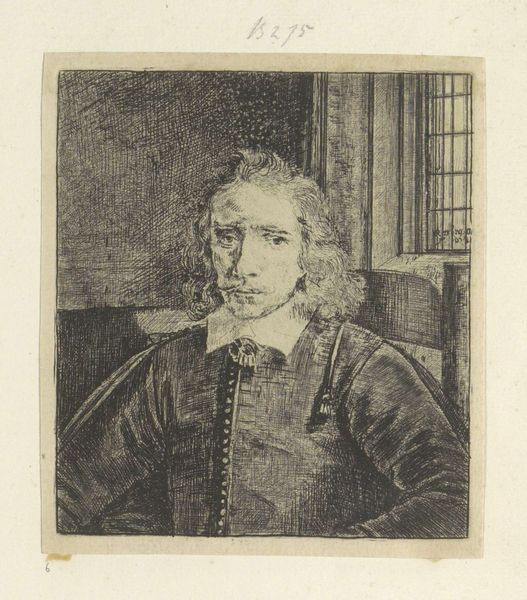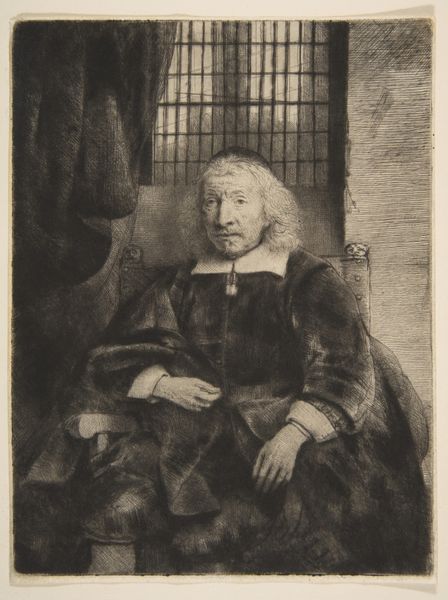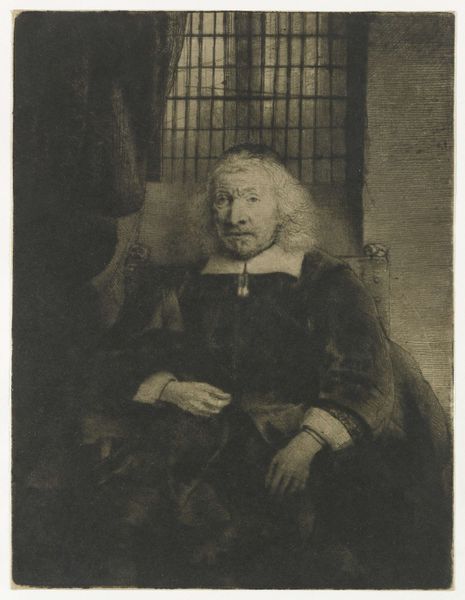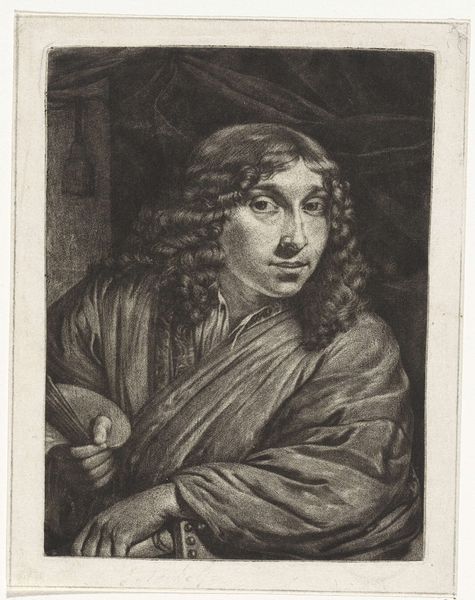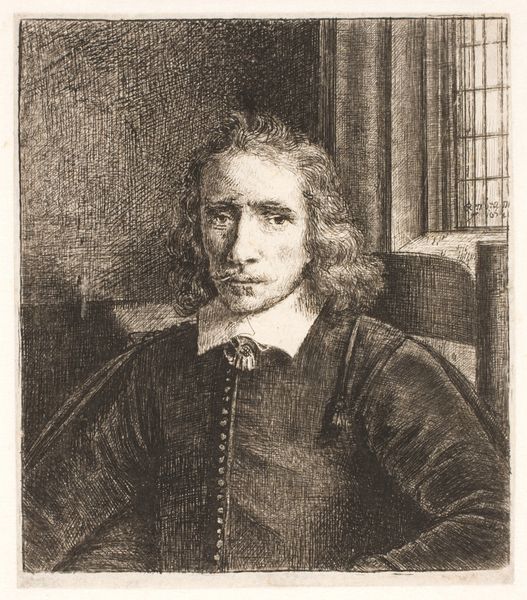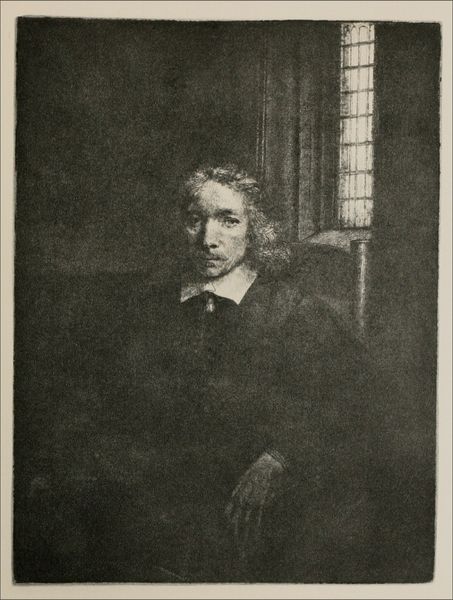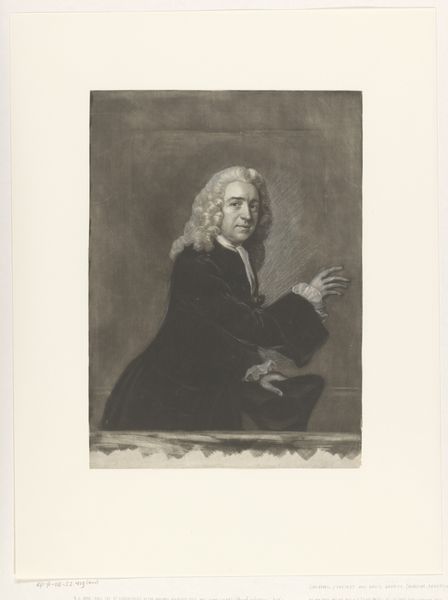
drawing, print, etching, ink, charcoal
#
portrait
#
drawing
#
self-portrait
#
baroque
#
dutch-golden-age
# print
#
etching
#
charcoal drawing
#
figuration
#
charcoal art
#
ink
#
underpainting
#
charcoal
Dimensions: height 198 mm, width 149 mm
Copyright: Rijks Museum: Open Domain
Curator: This is an etching by Rembrandt van Rijn titled "Pieter Haaringh," created in 1655, currently residing at the Rijksmuseum. Editor: It feels instantly somber. The figure is almost swallowed by the shadows, yet there's a profound intimacy—like a shared confidence caught in a quiet moment. Curator: The formal structure relies heavily on chiaroscuro, a technique characteristic of Rembrandt, employing stark contrasts between light and shadow to define form and create dramatic depth. Note how the window's geometric rigor counters the fluidity of the sitter's hair and the looser handling of the fabrics. Editor: The window. It’s fascinating. Is it letting light in, or keeping something, or someone, out? The light that catches his face and hands… they seem vulnerable, like moths fluttering in the dark. The details of his dress are a blur. Curator: The etching process allows for nuanced tonal gradations. Rembrandt masterfully manipulates the density and direction of lines to model form, capturing textures with incredible fidelity, even in the most recessive areas of the composition. He exploits the surface properties, transforming a base metal into luminous image. Editor: To me, this piece is saying something profound about time and impermanence. I am more captured by the idea of a soul staring out into the unknown from an old house, rather than lines or tonal gradations. His eyes tell the entire story and invite me inside that house with all the feelings that come with time and aging. He is staring right through us to a new eternity, so how can lines ever make me understand that concept! Curator: Indeed. But by grasping the structural elements of contrast and composition we can understand the mechanisms through which this sense of time and the fleeting soul is captured by Rembrandt. By mastering that, he forces the eye towards the figure's center—it is no longer merely portraiture. It becomes about how one's gaze encounters both mortality and temporality simultaneously. Editor: Hmm… Still I lean towards it all emanating from some raw intuitive part. The mechanics can assist but never wholly conjure such affecting presence as we have here. What else could be said? It certainly gets the emotions running! Curator: True. Art historical interpretation is multifaceted; the interplay of form and subjective experience is crucial. Understanding them can elevate that experience to a different level.
Comments
No comments
Be the first to comment and join the conversation on the ultimate creative platform.
